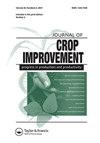从藜麦中恢复:玻利维亚的再生农业研究
IF 1.5
Q3 AGRONOMY
引用次数: 1
摘要
我们的目标是研究将再生农业引入玻利维亚南部高原脆弱景观的方法。藜麦(藜麦)热潮(2010-2014)促使农民清除大面积的原生植被:灌木、草和仙人掌的顶极群落。大部分田地很快就被废弃了,本地植物也没有自然生长。风正在迅速侵蚀沙质土壤。在当地知识的指导下,植物探索发现了野生植物的种类和生态类型,特别是灌木、豆科植物、草和仙人掌,它们可以作为间作种植和控制侵蚀的活屏障。采用参与式研究方法,在农民的田间对这些植物进行了评估。采用常规植物育种方法培育了藜麦新品种。研究人员学会了在活的屏障中种植野生灌木和草,以控制土壤侵蚀。野生的本地羽扇豆首次被种植,用作覆盖作物。当地的仙人掌在苗圃中种植,以鼓励农民在田地附近种植。新的藜麦品种更好地适应了当地环境。我们认为,这一创新的、广谱的研究议程是一种在整个景观水平上的植物育种。这些多领域的研究对于发展多样化、综合、可再生的农业非常重要。本文章由计算机程序翻译,如有差异,请以英文原文为准。
Recovering from quinoa: regenerative agricultural research in Bolivia
ABSTRACT Our objective was to research ways to introduce regenerative agriculture into the fragile landscape of the Southern Altiplano of Bolivia. The quinoa (Chenopodium quinoa) boom (2010–2014) had stimulated farmers to clear large areas of native vegetation: a climax community of shrubs, grasses and cacti. Most fields were soon abandoned, and native plants did not grow back spontaneously. Wind was rapidly eroding the sandy soils. Botanical exploration, informed by local knowledge, discovered species and ecotypes of wild plants, especially shrubs, legumes, grasses and cacti that could be grown as intercrops and as live barriers to control erosion. These plants were evaluated in farmers’ fields, using participatory research. New varieties of quinoa were developed by conventional plant breeding. Researchers learned to grow wild shrubs and grasses in live barriers, to control soil erosion. Wild, native lupines were cultivated for the first time, to use as cover crops. Native cacti were grown in nurseries to encourage farmers to plant them near fields. The new quinoa varieties were better adapted to the local environment. We conclude that this innovative, broad-spectrum research agenda is a kind of plant breeding at the level of the whole landscape. These multiple lines of research are important for developing a diverse, integrated, regenerative agriculture.
求助全文
通过发布文献求助,成功后即可免费获取论文全文。
去求助
来源期刊

Journal of Crop Improvement
Multiple-
CiteScore
3.30
自引率
7.70%
发文量
42
期刊介绍:
Journal of Crop Science and Biotechnology (JCSB) is a peer-reviewed international journal published four times a year. JCSB publishes novel and advanced original research articles on topics related to the production science of field crops and resource plants, including cropping systems, sustainable agriculture, environmental change, post-harvest management, biodiversity, crop improvement, and recent advances in physiology and molecular biology. Also covered are related subjects in a wide range of sciences such as the ecological and physiological aspects of crop production and genetic, breeding, and biotechnological approaches for crop improvement.
 求助内容:
求助内容: 应助结果提醒方式:
应助结果提醒方式:


